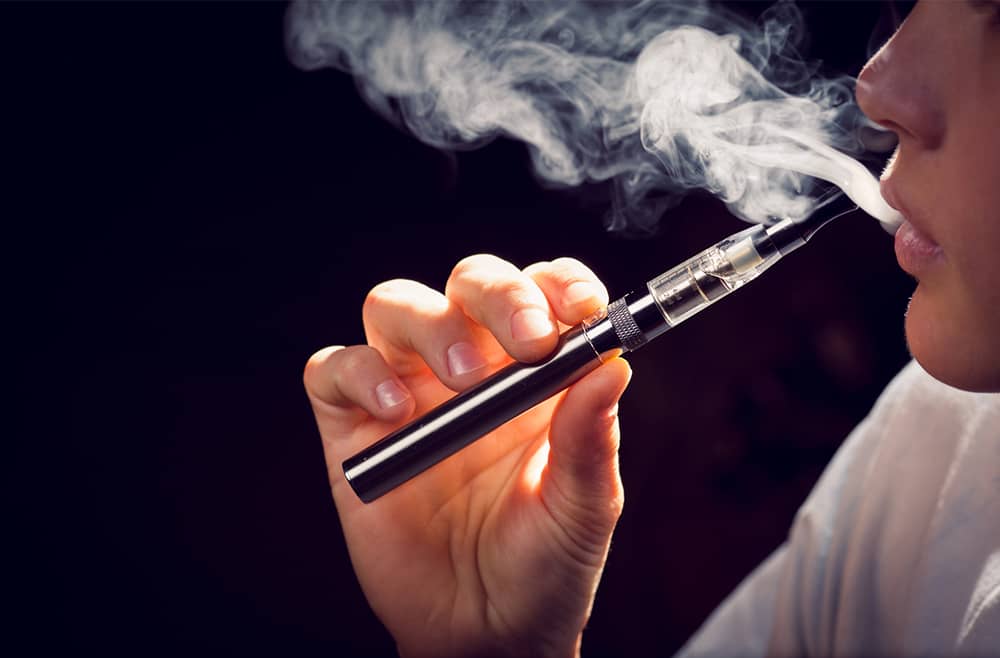Nicotine is in a cigarette highly addictive substance found in tobacco products like cigarettes and vapes. Despite the health risks associated with nicotine consumption, millions of people worldwide continue to use these products. It is essential to understand how much nicotine is in cigarettes compared to vapes and the potential effects on the body to make informed decisions about nicotine consumption.
 According to the Centers for Disease Control and Prevention (CDC), the average amount of nicotine in a single cigarette ranges from 6 mg to 13 mg. However, the amount of nicotine in cigarettes can vary depending on the brand, type of tobacco, and manufacturing process.
When a person smokes a cigarette, the nicotine is absorbed into the bloodstream through the lungs and quickly reaches the brain. This rapid delivery of nicotine makes cigarettes highly addictive and increases the risk of developing a smoking addiction.
In addition to nicotine, cigarettes contain many other harmful chemicals, including tar, carbon monoxide, and formaldehyde. These chemicals can damage the lungs and increase the risk of developing lung cancer, heart disease, and other health problems.
According to the Centers for Disease Control and Prevention (CDC), the average amount of nicotine in a single cigarette ranges from 6 mg to 13 mg. However, the amount of nicotine in cigarettes can vary depending on the brand, type of tobacco, and manufacturing process.
When a person smokes a cigarette, the nicotine is absorbed into the bloodstream through the lungs and quickly reaches the brain. This rapid delivery of nicotine makes cigarettes highly addictive and increases the risk of developing a smoking addiction.
In addition to nicotine, cigarettes contain many other harmful chemicals, including tar, carbon monoxide, and formaldehyde. These chemicals can damage the lungs and increase the risk of developing lung cancer, heart disease, and other health problems.
 Vapes, also known as e-cigarettes, are a type of electronic nicotine delivery system (ENDS) that use a battery-powered device to heat a liquid that contains nicotine, flavorings, and other chemicals. When a person inhales the vapor, the nicotine is absorbed into the bloodstream through the lungs.
The amount of nicotine in vapes can vary depending on the type of device, the concentration of nicotine in the e-liquid, and the vaping behavior of the user. According to the CDC, a single puff of a vape can contain between 0.5 mg and 15 mg of nicotine.
Unlike cigarettes, vapes do not produce smoke, which means they do not contain harmful chemicals like tar and carbon monoxide. However, the long-term health effects of vaping are still unknown, and studies have shown that vaping can cause lung damage and other health problems.
Vapes, also known as e-cigarettes, are a type of electronic nicotine delivery system (ENDS) that use a battery-powered device to heat a liquid that contains nicotine, flavorings, and other chemicals. When a person inhales the vapor, the nicotine is absorbed into the bloodstream through the lungs.
The amount of nicotine in vapes can vary depending on the type of device, the concentration of nicotine in the e-liquid, and the vaping behavior of the user. According to the CDC, a single puff of a vape can contain between 0.5 mg and 15 mg of nicotine.
Unlike cigarettes, vapes do not produce smoke, which means they do not contain harmful chemicals like tar and carbon monoxide. However, the long-term health effects of vaping are still unknown, and studies have shown that vaping can cause lung damage and other health problems.
How much Nicotine is in cigarettes
Cigarettes are a type of tobacco product that contains many harmful chemicals, including nicotine. Nicotine is in cigarette stimulant that affects the central nervous system and increases heart rate, blood pressure, and respiration. It is also highly addictive, making it difficult for smokers to quit. According to the Centers for Disease Control and Prevention (CDC), the average amount of nicotine in a single cigarette ranges from 6 mg to 13 mg. However, the amount of nicotine in cigarettes can vary depending on the brand, type of tobacco, and manufacturing process.
When a person smokes a cigarette, the nicotine is absorbed into the bloodstream through the lungs and quickly reaches the brain. This rapid delivery of nicotine makes cigarettes highly addictive and increases the risk of developing a smoking addiction.
In addition to nicotine, cigarettes contain many other harmful chemicals, including tar, carbon monoxide, and formaldehyde. These chemicals can damage the lungs and increase the risk of developing lung cancer, heart disease, and other health problems.
According to the Centers for Disease Control and Prevention (CDC), the average amount of nicotine in a single cigarette ranges from 6 mg to 13 mg. However, the amount of nicotine in cigarettes can vary depending on the brand, type of tobacco, and manufacturing process.
When a person smokes a cigarette, the nicotine is absorbed into the bloodstream through the lungs and quickly reaches the brain. This rapid delivery of nicotine makes cigarettes highly addictive and increases the risk of developing a smoking addiction.
In addition to nicotine, cigarettes contain many other harmful chemicals, including tar, carbon monoxide, and formaldehyde. These chemicals can damage the lungs and increase the risk of developing lung cancer, heart disease, and other health problems.
Nicotine in vapes
 Vapes, also known as e-cigarettes, are a type of electronic nicotine delivery system (ENDS) that use a battery-powered device to heat a liquid that contains nicotine, flavorings, and other chemicals. When a person inhales the vapor, the nicotine is absorbed into the bloodstream through the lungs.
The amount of nicotine in vapes can vary depending on the type of device, the concentration of nicotine in the e-liquid, and the vaping behavior of the user. According to the CDC, a single puff of a vape can contain between 0.5 mg and 15 mg of nicotine.
Unlike cigarettes, vapes do not produce smoke, which means they do not contain harmful chemicals like tar and carbon monoxide. However, the long-term health effects of vaping are still unknown, and studies have shown that vaping can cause lung damage and other health problems.
Vapes, also known as e-cigarettes, are a type of electronic nicotine delivery system (ENDS) that use a battery-powered device to heat a liquid that contains nicotine, flavorings, and other chemicals. When a person inhales the vapor, the nicotine is absorbed into the bloodstream through the lungs.
The amount of nicotine in vapes can vary depending on the type of device, the concentration of nicotine in the e-liquid, and the vaping behavior of the user. According to the CDC, a single puff of a vape can contain between 0.5 mg and 15 mg of nicotine.
Unlike cigarettes, vapes do not produce smoke, which means they do not contain harmful chemicals like tar and carbon monoxide. However, the long-term health effects of vaping are still unknown, and studies have shown that vaping can cause lung damage and other health problems.

